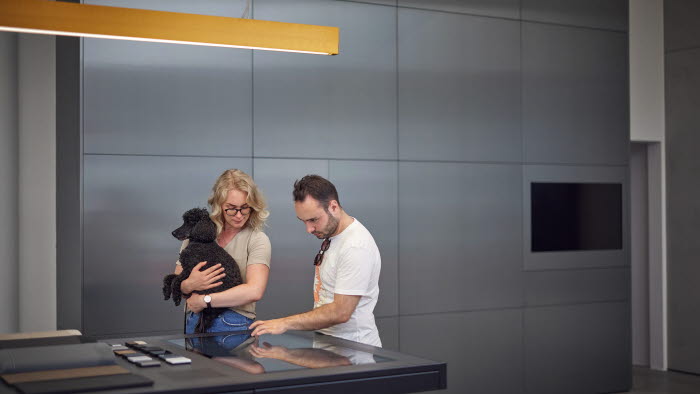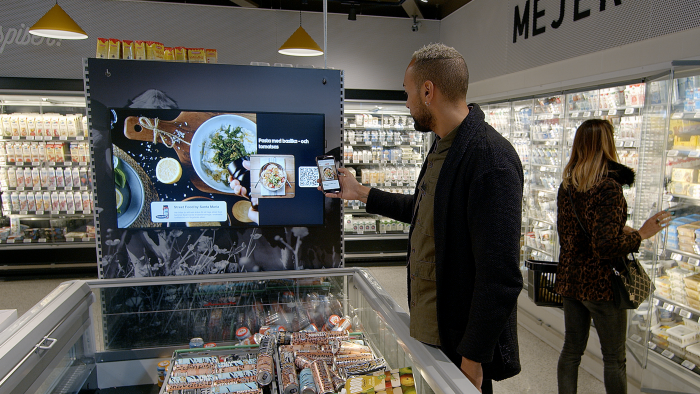
The liquid consumer and why you need to build better shopping experiences across channels
Time to consume: 3 min
18 November 2021
The need to meet customers across channels is undoubtedly one of the trends that has been reinforced under Covid-19. Customers can no longer be categorized as being either an online or a physical customer, as they effortlessly move across digital and physical spheres. Retailers must take advantage of the strengths of each channel and build engaging, cohesive and frictionless shopping experiences across physical and digital platforms.
Omnichannel optimizing
Covid-19 has increased the complexity of the customer journey and reinforced cross channel behavior. Customers must be met on their terms, meaning being able to shop whenever, wherever and at whatever time it suits them best. Therefore, it has never been more important for retailers and brands to go all in on their omnichannel efforts by merging online and offline in order to create one holistic experience.
At the same time, the modern customer is both extremely well-informed and digitally agile, and the endless digital tools – such as price comparison, stock status, customer recommendations, social media, etc. – give them the upper hand. This means, if you lose the customer in one channel – e.g. the prices on your website differs from your store – you are very likely to lose them all-around. Online and offline, and all touchpoints in between, should be two expressions of the same reality and simultaneously complement each other. Why should customers not be able to return a product, they bought online, in the physical store? It might cause you logistics troubles because of a setup not supporting the consumer behavior – but for the customer it would seem like complete nonsense.
49% of consumers want to return items purchased online in the physical store
Retail Reborn, Retail Institute Scandinavia, August 2021
The omnichannel store
Digital has become a fully integrated part of consumers’ lives. Technology and digital devices assist customers on their shopper journey, also when shopping in stores. Many take out their smartphones to check if the product has received good reviews from other customers; if they can find the product cheaper online or in another store; or even to check if the store, they are currently visiting, hold the item they are looking for in stock. Why not beat the customers to it and accommodate the store to their behavior?
The omnichannel store caters to customers’ cross channel behavior and supplies them with the tools they need for an excellent shopping experience – whether the objective is to enhance e.g. the degree of convenience, create more entertaining or personal experiences, or providing a greater degree of transparency, product information, etc.
Case: MADE.COM
The design and furniture brand MADE.COM has opened a store in Amsterdam that serves as a showroom for a selection of the brand’s products. As the name suggest, MADE.COM is primarily an online store, and the Amsterdam store is the first physical store in the Netherlands. The store functions as an inspiration channel for the customers in decorating and furnishing their homes, as it gives them the opportunity to experience the products irl while still enticing customers to interact with the brand digitally. As the entire product range is not available in the store, it also features a giant screen where customers can search for and check out the brand’s entire range. If customers find a product to their liking, the screen gives them the opportunity to immediately print out a card with a photo of the item along with the product name and a QR code they can scan, leading them to the product’s dedicated webpage at any time.
Further, the second floor of the store has been turned in to an “Instapartment” meant to engage shoppers with the space decorated as an apartment with Instagram-worthy interior design. Besides enticing customers to interact with the space and, hopefully, share their moments from the apartment on Instagram, the “Instaparment” is also meant as a hotspot for influencers to create content while in the MADE.COM environment. The space is thus designed to take advantage of customers’ cross channel behavior and make them interact with the brand both physically and digitally.
Photos: Retail Institute Scandinavia
Article written by
Laura Simone Andersen
Trend Specialist
Retail Institute Scandinavia







